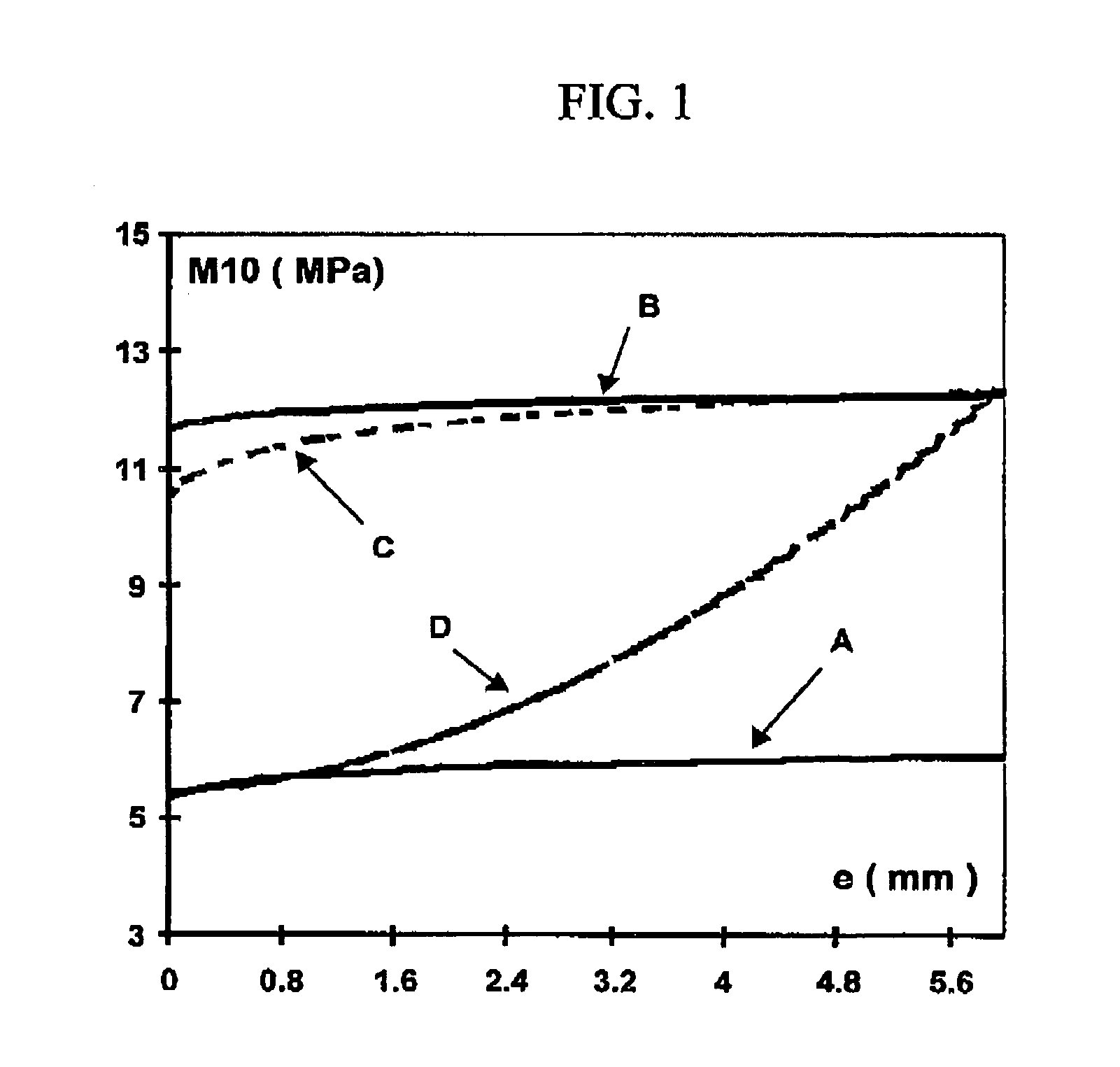Tread for a tire having a rigidity gradient
a technology of rigidity gradient and tread, which is applied in the direction of tyre tread bands/patterns, tire parts, vehicle components, etc., can solve the problems of increasing production costs, unsatisfactory performance, and complex manufacturing of composite treads, and achieves simple and economical effects
- Summary
- Abstract
- Description
- Claims
- Application Information
AI Technical Summary
Benefits of technology
Problems solved by technology
Method used
Image
Examples
Embodiment Construction
I. Measurements and Tests Used
[0041]The treads and rubber compositions constituting these treads are characterised, before and after curing, as indicated hereafter.
[0042]I-1. Mooney plasticity. An oscillating consistometer such as described in French Standard NF T 43-005 (November 1980) is used. The Mooney plasticity is measured in accordance with the following principle: the raw composition (i.e. before curing) is moulded in a cylindrical enclosure heated to 100° C. After one minute's preheating, the rotor turns within the test piece at 2 rpm, and the torque used for maintaining this movement is measured after four minutes' rotation. The Mooney plasticity (ML 1+4) is expressed in “Mooney units” (MU, with 1 MU=0.83 Newton.meter).
[0043]I-2. Scorching time. The measurements are effected at 130° C., in accordance with French Standard NF T 43-005. The evolution of the consistometric index as a function of time makes it possible to determine the scorching time for the rubber compositions...
PUM
| Property | Measurement | Unit |
|---|---|---|
| temperature | aaaaa | aaaaa |
| temperature | aaaaa | aaaaa |
| temperature | aaaaa | aaaaa |
Abstract
Description
Claims
Application Information
 Login to View More
Login to View More - R&D
- Intellectual Property
- Life Sciences
- Materials
- Tech Scout
- Unparalleled Data Quality
- Higher Quality Content
- 60% Fewer Hallucinations
Browse by: Latest US Patents, China's latest patents, Technical Efficacy Thesaurus, Application Domain, Technology Topic, Popular Technical Reports.
© 2025 PatSnap. All rights reserved.Legal|Privacy policy|Modern Slavery Act Transparency Statement|Sitemap|About US| Contact US: help@patsnap.com


